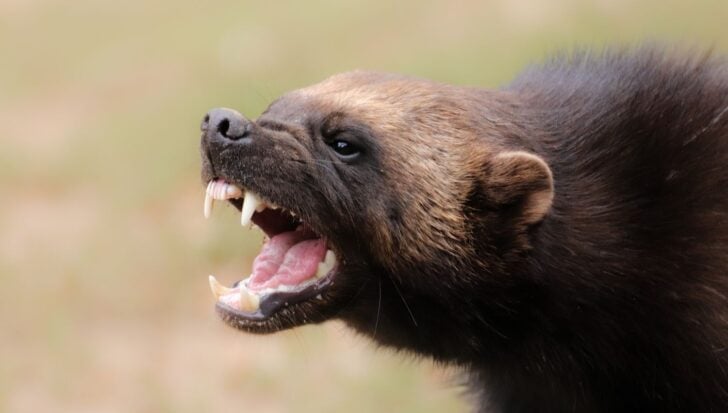Wolverines might share a name with the Marvel character, but the real animals are impressive on their own.
They resemble small, shaggy bears, yet they’re built for some of the harshest environments on Earth, with a whole set of adaptations that help them survive extreme cold.
If you’re curious about what makes them so extraordinary, here are 25 wild wolverine facts worth knowing.
Contrary to what you might think, wolverines are not closely related to wolves, which belong to the dog family, Canidae.
Wolverines are actually the largest members of the weasel family, known as Mustelids. That means they are closely related to weasels, otters, badgers, and polecats.
Typically around the size of an average dog, adult male wolverines weigh up to 40 pounds (18 kilograms), while adult females may weigh up to 26 pounds (11.8 kg).
The scientific name for wolverines is Gulo gulo, and it’s derived from the Latin word for glutton.
Wolverines roam the cold, remote wildernesses of the Northern Hemisphere, stretching across Alaska, Canada, Scandinavia, and Siberia. They thrive in boreal forests, alpine tundra, and mountainous regions where few other predators dare to tread.
They’re well-adapted for cold weather, with thick, oily fur to stay warm and repel frost, and wide paws for walking on snow.
While wolverines are omnivores, eating both meat and vegetation, their diet mainly consists of dead carcasses that they scavenge.
They sometimes won’t wait for their turn and will steal food from larger predators, such as wolves, bears, and mountain lions.
Wolverines are also excellent hunters and can reach speeds of up to 30 miles per hour (48 kilometers per hour) while chasing prey.
They’re not just fast on land, but are also great swimmers and excellent climbers, skills that come in handy when evading predators whose meal they’ve stolen.
Wolverines typically go hunting solo at night, but they are also active during the day.
Male wolverines are super territorial and ward off other males with their strong scent. Quite a feat, considering their territories can range from 200 to 770 square miles (500 to 2,000 square kilometers).
Female wolverines can delay getting pregnant after mating until the conditions are favorable. This process is called delayed implantation and allows delays of up to four or five months.
After implantation, pregnancy for female wolverines is relatively short, lasting about 30 to 50 days. Kits are typically born between January and April, often in late winter.
Young wolverines are called kits, and they usually stay with their mothers for up to a year before becoming independent. They reach adulthood at around 2 to 3 years of age.
Female wolverines can have anywhere from one to six kits at a time, with an average of two or three.
When pregnant wolverines are near delivery, they prepare a den by burrowing deep into the snow. These dens can have tunnels that are 15 feet deep.
Wolverines are fearless and have been known to hunt down animals ten times their size, such as moose and caribou.
They are nicknamed skunk bears because they release a smelly secretion from their glands on their rear ends, which they use to mark their territory and attract mates.
When wolverines have excess food, they store it for later, burying it in snow like a makeshift refrigerator.
Wolverines have an exceptional sense of smell and can use it to find carcasses buried under 20 ft of snow.
In the wild, faced with predators and human threats, wolverines only live for an average of 10 years. In captivity, they can live up to 17 years.
Unlike the Marvel character, real wolverine claws don’t retract fully.
Male Wolverines mate for life with multiple females, but don’t hang around. Instead, they have their own territory and only check in on their kits every now and then.
Wolverines have a unique upper molar that is rotated 90 degrees, which enables them to tear through flesh with ease.

If there’s one takeaway from this, it’s that wolverines, just like in the comic, are one of nature’s most incredible survivors.
They’re not just strong, they’re clever, able to use their environment to their advantage.
Solitary and fearless, wolverines are proof that you don’t need a pack to rule the wild.
